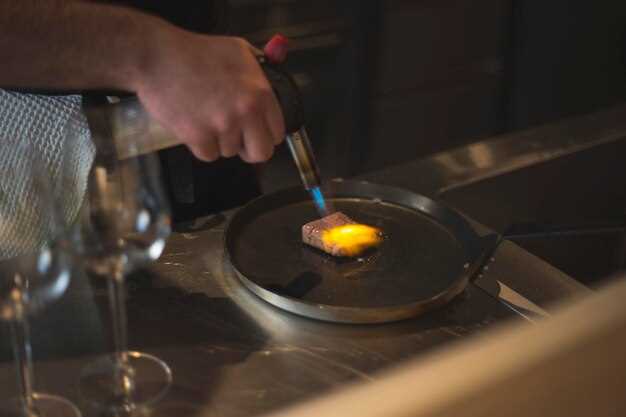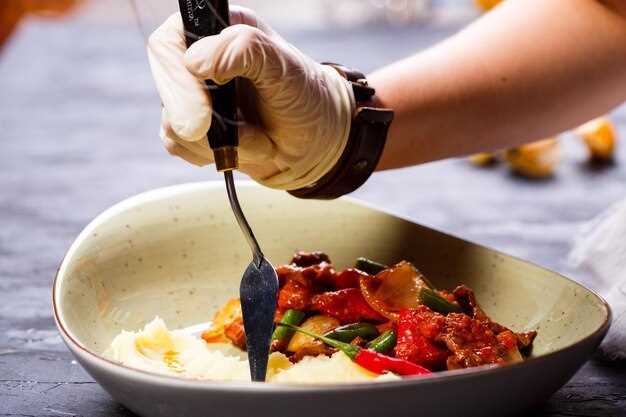Begin your culinary ascent by recognizing that every moment, even those spent scrubbing pots, builds a foundation for mastery. Embrace each kitchen task, no matter how menial, as a stepping stone towards culinary excellence. Developing this mindset early will foster an environment where growth thrives naturally.
Network relentlessly and learn from everyone around you. The kitchen is a treasure trove of knowledge, waiting for curious minds. Seek advice from seasoned cooks, absorb techniques from skilled chefs, and polish your skills with insights gleaned from mentors. Your willingness to learn will become an asset as you climb the culinary ladder.
The importance of failing gracefully cannot be overstated. Mistakes are inevitable, but how you respond sets the course for your path forward. Analyze missteps and adjust your approach. This resilience–learning to refine and adapt–cements your reputation in the competitive culinary arena.
Commit to honing your distinctive culinary style. Experiment with flavors, innovate with ingredients, and refine your presentation artisanal flair. Your unique signature dish might just be the key that unlocks the prestigious honor of a Michelin Star. Authentic creativity captures attention and sets you apart, leading to the ultimate accolades in gastronomy.
Overcoming Challenges and Learning from Experience
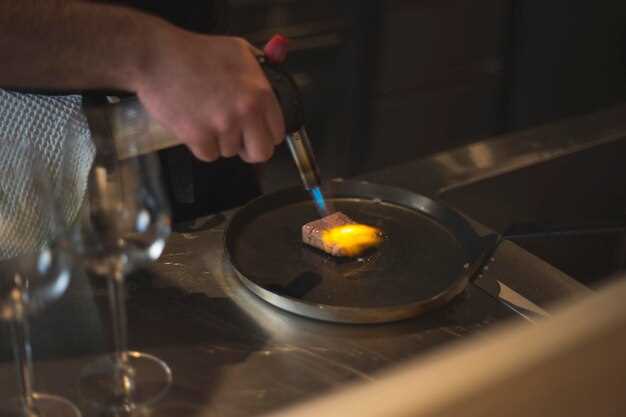
Face challenges with resilience. Tackling each obstacle directly often leads to growth and improved skills. Here are specific strategies to help transform potential roadblocks into learning opportunities:
- Adapt to Feedback: Actively seek constructive criticism from supervisors and peers. Use it to refine techniques and improve dish execution, leading to higher culinary standards.
- Embrace Mistakes: View failures not as setbacks, but as stepping stones. Analyze what went wrong and pivot strategies swiftly to prevent similar errors in the future.
- Stay Inquisitive: Attend workshops, take online courses, and read extensively about culinary trends to stay relevant and inspired. Continuous learning can provide fresh perspectives and new ideas.
- Prioritize Efficiency: Optimize workflows in the kitchen to handle high-pressure environments more effectively. Streamlining processes can enhance both work pace and quality.
- Build a Supportive Network: Connect with mentors and other chefs. A well-crafted support system can provide valuable insights and encourage career growth.
Turning difficulties into educational experiences creates a robust foundation for success in a demanding environment. Consistent improvement through reflection and adaptation maximizes potential and paves the way to achievements like earning a Michelin star.
How a Humble Beginning as a Dishwasher Shapes Resilience
Recognize that starting as a dishwasher offers invaluable lessons in resilience, adaptability, and determination. This position demands a keen eye for efficiency and attention to detail under pressure. Prioritizing tasks and developing a rapid workflow become second nature, building a foundation for handling high-stress environments later in your career.
Experiencing the fast-paced and often unglamorous work of a kitchen provides insight into teamwork and communication. Each dish cleaned and piece of cutlery arranged contributes to the whole operation, fostering a deep appreciation for every role’s contribution to success. This mindset strengthens your ability to work collaboratively and appreciate diverse skills within culinary teams.
Embrace the challenges faced as a dishwasher to refine problem-solving skills. The constant stream of dirty dishes and urgent requests trains you to think quickly and make decisions with confidence. Encountering varying levels of demand throughout shifts instills flexibility, preparing you to navigate any situation thrown your way later in your career.
Remember that many renowned chefs began their culinary careers at the dishwasher station, learning the importance of humility and hard work. It’s where the steadfast spirit needed to overcome future obstacles and excel in the competitive field is forged. Take pride in this starting point and let it shape your path with determination and tenacity.
The Role of Mentorship in Culinary Growth
Seek out a seasoned chef who inspires and challenges you. A mentor offers invaluable insights and wisdom that books and videos simply can’t match. Regular interactions with an experienced professional help refine skills and broaden culinary perspectives.
Engage actively during mentorship sessions by asking specific questions and embracing feedback. Real-time advice on techniques, ingredients, and the nuances of kitchen management accelerates growth.
Observe their approach to problem-solving during chaotic shifts. This firsthand learning experience enhances decision-making and adaptation skills essential for thriving in high-pressure environments.
Build a robust network through your mentor’s connections. This opens doors to opportunities, from unique events to potential collaborations.
Remember that mentorship is a two-way street. Be eager, courteous, and committed to demonstrate your passion and dedication. This reciprocal dynamic enriches both parties and fosters a lasting professional relationship.
The influence of a mentor beyond specific teachings significantly shapes culinary identity. With guidance, one hones not just technical skills but also personal style and philosophy, eventually crafting a distinctive voice in the culinary world.
Adapting to Kitchen Dynamics and Stress
Focus on clear and direct communication with team members during service. This prevents misunderstandings and ensures tasks are executed swiftly. To acclimate to the high-pressure environment, prioritize learning effective time-management techniques. Create a mental checklist for each dish and stay organized to alleviate time-related stress.
Emphasize the importance of physical well-being to manage long hours. Maintain good posture, stretch regularly, and select comfortable footwear to minimize physical strain. Regular hydration and balanced meals during breaks sustain energy levels throughout the shift.
Cultivate resilience by understanding personal stress triggers. Develop a personal strategy for handling pressure, like controlled breathing or quick relaxation exercises, to maintain composure amidst chaos. Reach out to colleagues for support and perspective; fostering a sense of camaraderie transforms stress into a shared challenge rather than an isolated burden.
Embrace adaptability by being open to feedback and continuously seeking improvement. Kitchens thrive on dynamic interactions; observing seasoned chefs and incorporating their techniques can swiftly enhance your own abilities and efficiency. This proactive approach transforms stress into growth opportunities, broadening your culinary skills and adaptability under pressure.
Key Milestones on the Road to Culinary Excellence
Refine your basic skills with rigorous practice under a skilled mentor. Gain proficiency in knife handling, sauce preparation, and meat and vegetable techniques. Mastery of these fundamental skills lays the foundation for innovation.
Embrace continuous education by attending workshops or enrolling in specialized culinary courses. This exposes you to new cuisines and techniques, broadening your capabilities and marketability. Chasing knowledge ignites passion.
Accumulate diverse work experience by working in various restaurant settings. Exposure to different kitchen environments cultivates adaptability and resilience, two critical traits for the culinary industry.
Network effectively within the culinary community. Relationship-building with chefs, suppliers, and food critics can open doors to new opportunities and collaborations. Become known and respected in gastronomic circles.
Never shy away from experimentation. While following classic recipes is necessary, inventing new dishes or giving traditional meals a modern twist encourages creativity and could become a signature part of your repertoire.
Sustain a relentless pursuit of feedback. Constructive criticism allows you to continuously refine your skills and better understand your audience’s preferences. Seeking opinions develops a chef’s perspective on improvement.
Consistency in quality and service cements your reputation. Delivering dishes to a high standard ensures customer retention and attracts prestigious culinary awards, like the Michelin Star.
Secrets of a Michelin Star Chef: Insights from the Interview
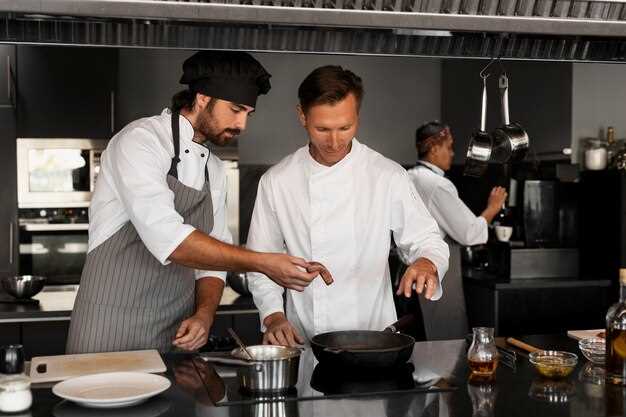
“Prioritize fresh ingredients,” says the Michelin star chef passionately, “as quality always triumphs. Sourcing locally not only supports community farmers but also ensures optimal flavor in every dish. Using seasonal produce can elevate a menu, providing diners with unique and memorable experiences.”
Discussing technique, the chef advises, “Master basic cooking skills before experimenting. Perfecting foundational techniques like knife skills and classic sauces will build confidence, allowing chefs to innovate confidently. Practice makes precise, and precision in cooking results in consistent excellence.”
On balancing creativity and discipline, the chef shares, “Establish a routine that facilitates innovation. While creativity drives culinary art, discipline ensures every dish meets high standards. Set aside time weekly to brainstorm and test new ideas, keeping the creative juices flowing while maintaining a structured environment.”
Team dynamics also play a pivotal role in achieving Michelin excellence. The chef notes, “Foster an environment of respect and collaboration in the kitchen. Encourage open communication and feedback. A cohesive team multiplies the collective potential, transforming individual efforts into gastronomic masterpieces.”
“Lastly,” the chef concludes with emphasis, “never stop learning. Attend workshops, taste other cuisines, and read extensively. Culinary arts evolve rapidly, and staying updated can inspire innovation, pushing the boundaries and ultimately securing that coveted Michelin star.”
Daily Routines and Habits that Foster Creativity
Begin your day with a brief meditation or mindfulness exercise. This practice clears your mind, creating space for fresh ideas. Allocate time for solitude; a quiet environment nourishes innovative thinking. Schedule regular breaks throughout the day, even if just for five minutes. These pauses recharge your mental energy and spark inspiration.
Prioritize a healthy breakfast rich in nutrients that fuel brain function–think fruits, nuts, and whole grains. Engage in exercises like jogging or yoga to boost blood flow to your brain, enhancing cognitive abilities and imagination. Keep a journal by your side to jot down sudden thoughts or inspirations. Regular reflection helps you connect disparate ideas into cohesive visions.
Explore new skills or hobbies outside your usual activities. This practice stretches your boundaries and stimulates your mind, forging new neural connections. Collaborate with others through brainstorming sessions or casual discussions. Different perspectives often catalyze creative breakthroughs.
| Activity | Benefit |
|---|---|
| Meditation/Mindfulness | Clears mind, fosters new ideas |
| Regular Breaks | Recharges mental energy |
| Healthy Breakfast | Enhances brain function |
| Exercise | Boosts cognitive abilities |
| Journaling | Connects ideas cohesively |
| Exploring New Skills | Stimulates mind |
| Collaboration | Inspires new perspectives |
Maintain a consistent sleep schedule to ensure your brain processes daily experiences effectively, transforming them into creative insights overnight. Dedicate evening time for relaxation, allowing ideas from the day to settle and innovate unconsciously.
Innovative Culinary Techniques that Stand Out
Experiment with sous-vide cooking to achieve unparalleled precision. By cooking food in a vacuum-sealed bag at a controlled temperature, chefs can ensure that meats and vegetables are cooked evenly while retaining maximum moisture and flavor. This technique, once exclusive to high-end restaurants, is now accessible and provides a consistent, restaurant-quality outcome.
Introduce the concept of molecular gastronomy to surprise and delight diners. Techniques such as spherification, foaming, and using liquid nitrogen can transform familiar ingredients into unexpected textures and presentations. Spherification, for example, allows for the creation of liquid-filled spheres that burst in the mouth, offering a novel taste sensation.
Utilize fermentation to add depth and complexity to dishes. By fermenting ingredients like miso, kimchi, and kombucha, chefs can add layers of umami and tanginess that elevate traditional recipes. This ancient method brings a unique flavor profile and promotes gut health.
For a sustainable approach, incorporate zero-waste cooking. Use every part of the vegetable or animal to minimize waste and craft creative dishes from often-discarded elements. For example, carrot tops can be turned into pesto, while fish bones can be boiled into a rich stock.
Finally, explore the nuances of smoking to add depth to flavors without overwhelming them. Cold smoking can infuse ingredients like butter, cheese, or even cocktails with a delicate smokiness. Hot smoking, on the other hand, is perfect for proteins, imparting a robust character that highlights their natural taste.
Cultivating a Team Spirit in a High-Pressure Environment
Encourage open communication by holding daily briefings before service. Allow every team member to express their concerns and ideas, ensuring everyone feels heard. This practice not only boosts morale but also fosters a sense of belonging. During these meetings, highlight individual and team successes to inspire motivation and acknowledge achievements.
Implement mentorship programs where experienced chefs guide less experienced staff. Pairing new team members with seasoned colleagues accelerates on-the-job learning and strengthens relationships. This shared knowledge transfer can lead to innovative solutions and elevate the team’s overall performance.
Celebrate diversity by showcasing dishes that reflect the cultural backgrounds of team members. This practice not only enriches the menu but also makes team members feel valued for their unique contributions. Encourage chefs to share personal recipes and stories behind them, sparking interest and inclusivity within the team.
Involve the team in goal-setting. Establish clear, attainable objectives together, enabling everyone to understand their role in the collective success. Regularly review progress and adjust goals when necessary, transforming challenges into collaborative opportunities. A shared vision can drastically enhance cohesion and purpose.
Promote a healthy work-life balance by recognizing the importance of mental and physical well-being. Implement breaks during shifts and ensure fair scheduling practices. Providing access to wellness resources or workshops can significantly reduce stress, contributing to a more harmonious working environment.
Regularly rotate kitchen positions to expand team members’ skill sets and perspectives. This strategy not only prevents monotony but also encourages mutual respect and understanding of each role’s challenges and intricacies. Rotating roles strengthens teamwork and resilience under pressure.
Host team-building activities outside the kitchen. Organize cooking classes, outings, or simple gatherings to deepen relationships in a relaxed setting. These interactions foster trust and camaraderie, ultimately reflecting positively in the kitchen dynamics during high-pressure moments.
Advice for Aspiring Chefs Aiming for Michelin Recognition
Hone Your Craft Relentlessly: Master culinary fundamentals and continuously refine your skills. Every dish is a canvas; focus on perfecting techniques and understanding flavor profiles. Consider signature styles while maintaining the flexibility to adapt and innovate.
Focus on Quality Ingredients: Prioritize sourcing exceptional ingredients. Establish relationships with trusted suppliers and local farmers, ensuring the freshest and most sustainable selections. Quality raw materials elevate your creations and resonate with discerning palates.
Develop a Distinct Culinary Voice: Cultivate your unique culinary perspective. Distinctive dishes draw attention and set you apart from the competition. Fuse personal inspiration with culinary traditions to craft memorable dining experiences.
Commit to Excellence in Service: Service is as critical as cuisine in achieving Michelin standards. Train your team to deliver impeccable, attentive service, fostering an environment where guests feel valued and chefs work harmoniously.
Build a Resilient Kitchen Culture: Create a supportive, team-oriented atmosphere. Nurture professional growth and encourage creativity among your staff. A united team produces better results and enhances the dining experience.
Seek Feedback and Continuously Improve: Constructive criticism is a valuable tool. Regularly solicit feedback from peers, guests, and mentors to identify areas for growth. Strive for continuous improvement to keep your culinary creations fresh and exciting.
Network Within the Culinary Community: Establish meaningful connections with fellow chefs, restaurateurs, and influencers. Opportunities often arise from strong networks, and sharing knowledge enriches your professional journey.
Stand By Your Culinary Philosophy: Remain true to your culinary vision and values. Authenticity resonates with patrons and critics alike, and consistency in your philosophy enhances the overall dining experience.
Q&A:
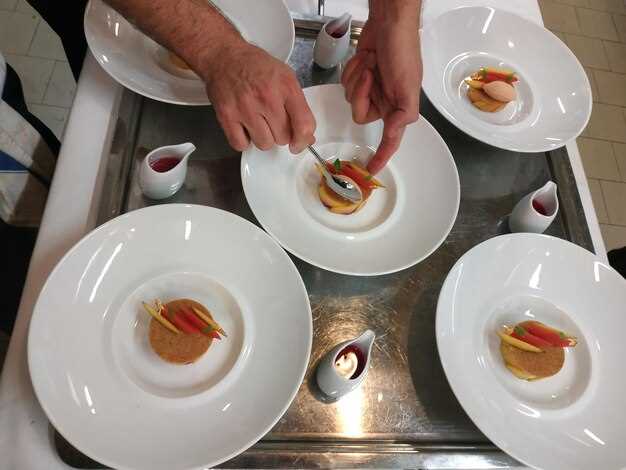
What challenges did the chef face while transitioning from a dishwasher to a Michelin-starred chef?
The chef faced numerous challenges, including mastering numerous culinary techniques, working long hours, and staying motivated despite occasional setbacks. Additionally, the transition required not just culinary skill, but also leadership abilities to manage a team and inspire excellence in the kitchen.
How did the chef’s early experiences influence their cooking style?
The chef’s early experiences instilled a strong work ethic and an appreciation for the foundational aspects of cooking, such as ingredient selection and preparation techniques. These experiences also inspired a deep respect for each role in the kitchen, affecting their collaborative approach in creating innovative dishes.
Did the chef have any mentors who played a significant role in their development?
Yes, the chef had several mentors who guided their learning and development. These mentors provided valuable advice on honing culinary skills and offered insights into the intricacies of operating a successful kitchen, greatly impacting the chef’s career path.
What are some key factors that contributed to the chef achieving a Michelin star?
The chef achieved a Michelin star through relentless dedication to quality, creativity in cuisine, and the ability to consistently deliver an exceptional dining experience. The emphasis on sourcing the best ingredients and maintaining a high standard of service also played crucial roles in this success.
How did the chef incorporate their personal background into their culinary creations?
The chef has infused their culinary creations with elements from their cultural background, often using traditional recipes and flavors reimagined with modern twists. This approach not only pays homage to their roots but also offers a unique dining experience that stands out in the culinary scene.
How did the chef transition from being a dishwasher to eventually earning a Michelin Star?
The chef began his culinary career at the very bottom, working as a dishwasher. He expressed an interest in cooking to his supervisors and was given the opportunity to assist in the kitchen. This initial chance allowed him to learn basic cooking techniques and gain valuable experience. Over time, his hard work and dedication were recognized, and he was promoted to higher positions, gradually taking on more responsibility. Throughout his career, he continued to learn from other chefs, attend culinary schools, and refine his skills. His relentless commitment to improving his craft and creating exquisite dishes eventually led to the recognition of his talent, earning him the prestigious Michelin Star.
What challenges did the chef face on the path to success, and how did he overcome them?
The chef encountered numerous challenges, including long hours, high-pressure environments, and the need to constantly innovate. Working in a kitchen demanded physical endurance and mental resilience. One significant challenge was staying motivated despite setbacks, such as dishes not meeting expectations or competitions not going as planned. He overcame these difficulties by maintaining a passion for cooking and a desire to learn. Networking with other culinary professionals also provided him with mentors who offered guidance and support. These relationships, along with his willingness to experiment with new techniques, helped him persevere through the tough times and continue to grow as a chef.
